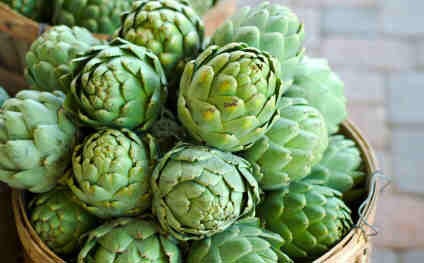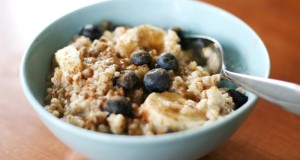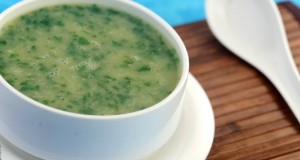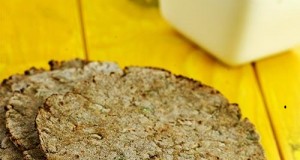 While artichokes may not be the easiest food to consume, the sheer volume of nutrients, minerals, and phytochemicals found in this extraordinary vegetable make eating them well worth it. Most people’s favorite part of the artichoke is the heart, but the leaves are actually the source of a vast majority of its health benefits. In fact, artichoke leaf extract has proven to be an extremely beneficial food with a host of illness-fighting, age-extending properties.
While artichokes may not be the easiest food to consume, the sheer volume of nutrients, minerals, and phytochemicals found in this extraordinary vegetable make eating them well worth it. Most people’s favorite part of the artichoke is the heart, but the leaves are actually the source of a vast majority of its health benefits. In fact, artichoke leaf extract has proven to be an extremely beneficial food with a host of illness-fighting, age-extending properties.
Artichokes are packed with phytonutrients such as quercetin, rutin, gallic acid, and cynarin, all working to protect against many health risks including cancer, heart disease, liver dysfunction, high cholesterol, and diabetes.1 In 2004, the United States Department of Agriculture conducted its largest, most comprehensive study analyzing the antioxidant content of the most commonly consumed foods. To the surprise of many, artichokes ranked in the top four vegetables and seventh overall.2 Throughout this article you’ll learn about the numerous ways that incorporating artichokes into your diet can benefit your health and well-being.
History
The globe artichoke, or Cynara scolymus, is the immature flowers of a thistle plant and is known as one of the oldest cultivated vegetables in the world. Most likely, artichokes originated in the Mediterranean, although they have been seen in ancient Egyptian writings as symbols of sacrifice and fertility. The Spanish eventually brought them to California in 1600, but they didn’t actually catch on with Americans until the 1920s. California provides nearly 100 percent of the artichoke crop in the United States, with Castroville, a town in the California Central Coast farm country, calling itself the “artichoke center of the world.” There are several varieties of artichokes such as Green Globe, Desert Globe, Big Heart, and Imperial Star, ranging in color from dark purple to pale green.3
Artichokes have been used as a digestive aid since ancient Egyptian times. Today, we know they contain nutrients that deliver several health benefits. However, full safety testing of artichoke supplements has not been conducted, so consult your health care provider before using it to treat any health condition.
THE BASICS
A perennial thistle belonging to the Cynara family, an artichoke has flower buds that develop into edible heads. The edible parts of each head include the base, which is called the heart, and the fleshy base of the leaves that form the artichoke. At the very center of the artichoke is an inedible mass of immature florets called the choke.
ANTIOXIDANTS
Normal chemical processes in the body result in waste products called free radicals that are capable of damaging healthy cells. Antioxidants are substances that neutralize free radicals so that damage is avoided or limited. The U.S. Department of Agriculture Nutrient Database reports that one medium artichoke delivers 15 percent of the recommended daily intake of vitamin C, based on a 2,000 calorie-a-day diet. Vitamin C is an antioxidant that protects proteins, lipids, carbohydrates and nucleic acids from damage caused by free radicals. The Oxygen Radical Absorbance Capacity, or ORAC, system, which rates foods according to their antioxidant capability, gives artichokes a score that is nine times higher than other sources of vitamin C such as orange juice and red peppers.
FIBER
One medium artichoke provides 10.3 g of fiber, or 41 percent of the recommended daily value. The fiber found in artichokes, called inulin, promotes intestinal health by stimulating the growth of good bacteria in the colon. It is also a soluble fiber, which helps lower cholesterol and maintain balanced blood sugar.
INDIGESTION
In the December 2003 issue of “Alimentary Pharmacology and Therapeutics,” G. Holtmann et al. reported that artichoke leaf extract was able to relieve the pain and discomfort associated with indigestion or acid reflux. Germany’s Commission E authorized artichoke for the treatment of dyspeptic problems, such as discomfort in the stomach, bloating, lack of appetite, nausea and mild diarrhea or constipation, according to Langone Medical Center at New York University.
CHOLESTEROL FIGHTER
High cholesterol is associated with an increased risk for coronary heart disease and atherosclerosis. Artichokes and artichoke leaf extract reduce cholesterol levels. The efforts to study this idea date back all the way to the 1970s, when scientists began examining cynarin and cholesterol in their labs.4
In a 12-week, double-blind study, 75 patients received placebo or 1,280 mg standardized artichoke leaf daily. At the end of the 12 weeks, the treated group recorded a modest reduction in total cholesterol of 4.2%.5
To further demonstrate the artichoke’s heart-healthy powers, scientists set up a randomized, placebo-controlled study to examine the effect of artichoke leaf extract in patients with high cholesterol. All participants showed positive results. Over 6 weeks, participants were split up, with half receiving artichoke extract and the rest a placebo. The patients receiving artichoke were shown to have an 18.5% reduction in cholesterol level.
WARNINGS
People with gallbladder disease should not use artichoke leaves or extracts until they consult their health care provider because they may stimulate gallbladder contraction, according to Langone Medical Center. Artichoke supplement also should not be used by pregnant or nursing women, young children, or people with liver or kidney disease.
As we mentioned earlier, artichokes have proven that they can be a difficult food to eat. Many people lack the experience in cooking and eating artichokes, so here are a few pointers so you can add this delicious, antioxidant-heavy vegetable to your diet.
Artichokes are available in most markets all year round, with the peak months being March, April, and May.
•Before cooking your artichoke, make sure to cut off the stem, if your artichoke still has it attached. Also you can trim off the very sharp leaf tips and use your fingers to slightly open up the leaves, allowing it to cook more effectively.
•Whether you boil or steam your artichoke, you can tell it’s done when the petal near the center pulls out easily.
•Don’t worry, the artichoke is one of the only foods where it is both proper and polite to eat with your fingers.
•Artichokes can be served hot or cold. To eat, just pull out the outer petals one at a time. Dip it in your favorite sauce and pull the leaves through your teeth, removing the soft pulpy portion. Discard the remaining portion of the leaf.
Continue this until all the petals have been removed. Use a spoon and remove the fuzzy center at the base of the artichoke and discard it. What remains is the heart of the artichoke and it is entirely edible. Enjoy!
Source: livestrong.com, lifeextension.com
 Mithila.net Mithila.net, Easyrecipes, Way2Foodie, Way2Foodie.com, Non Veg Recipes, Veg Recipes, Veg Recipe, Veg Recipes, Andhra Recipes, South Spicy Recipes, Vantillu, Kitchen, Indian Recipes, Telugu Recipes,
Mithila.net Mithila.net, Easyrecipes, Way2Foodie, Way2Foodie.com, Non Veg Recipes, Veg Recipes, Veg Recipe, Veg Recipes, Andhra Recipes, South Spicy Recipes, Vantillu, Kitchen, Indian Recipes, Telugu Recipes,



